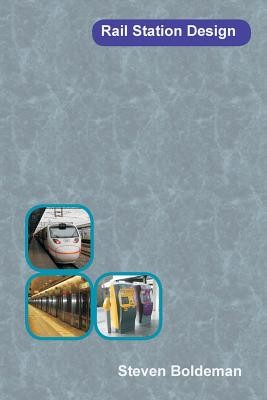
- We will send in 10–14 business days.
- Author: Steven Boldeman
- Publisher: Dolans Publishing
- ISBN-10: 0648309347
- ISBN-13: 9780648309345
- Format: 15.2 x 22.9 x 1.4 cm, minkšti viršeliai
- Language: English
- SAVE -10% with code: EXTRA
Reviews
Description
This book describes many of the features of the design of rail stations. It discusses the nature of rail systems, and how this impacts upon the design of rail stations. The different types of stations are identified. Also the configuration of rail stations, and how they are structured, is identified and discussed.
The book also discusses passenger flow modelling. This involves the calculation of the speed of movement of people through a rail station; what impacts that movement, and how to maximise the flow of people. The impact to rail operations is also dicussed, such as the increase in headways that comes from poor station design.
Many examples and photos are provided for different station designs. Photos awere taken from across Australia and South East Asia. Many examples are drawn from Hong Kong.
Also discussed is station design for light rail. Light rail stations are defined through their relationship to the roads that are commonly nearby, and the position of light rail stations should be optimised with reference to the nearby roads.
The book described many of the different engineering systems that accompany a rail station. This includes passenger information screens, lifts and escalators, as well as platform screen doors. This book also discusses the design of rail systems around stations, which affects how a station can be used to manage the movement of trains.
- Author: Steven Boldeman
- Publisher: Dolans Publishing
- ISBN-10: 0648309347
- ISBN-13: 9780648309345
- Format: 15.2 x 22.9 x 1.4 cm, minkšti viršeliai
- Language: English English
This book describes many of the features of the design of rail stations. It discusses the nature of rail systems, and how this impacts upon the design of rail stations. The different types of stations are identified. Also the configuration of rail stations, and how they are structured, is identified and discussed.
The book also discusses passenger flow modelling. This involves the calculation of the speed of movement of people through a rail station; what impacts that movement, and how to maximise the flow of people. The impact to rail operations is also dicussed, such as the increase in headways that comes from poor station design.
Many examples and photos are provided for different station designs. Photos awere taken from across Australia and South East Asia. Many examples are drawn from Hong Kong.
Also discussed is station design for light rail. Light rail stations are defined through their relationship to the roads that are commonly nearby, and the position of light rail stations should be optimised with reference to the nearby roads.
The book described many of the different engineering systems that accompany a rail station. This includes passenger information screens, lifts and escalators, as well as platform screen doors. This book also discusses the design of rail systems around stations, which affects how a station can be used to manage the movement of trains.


Reviews